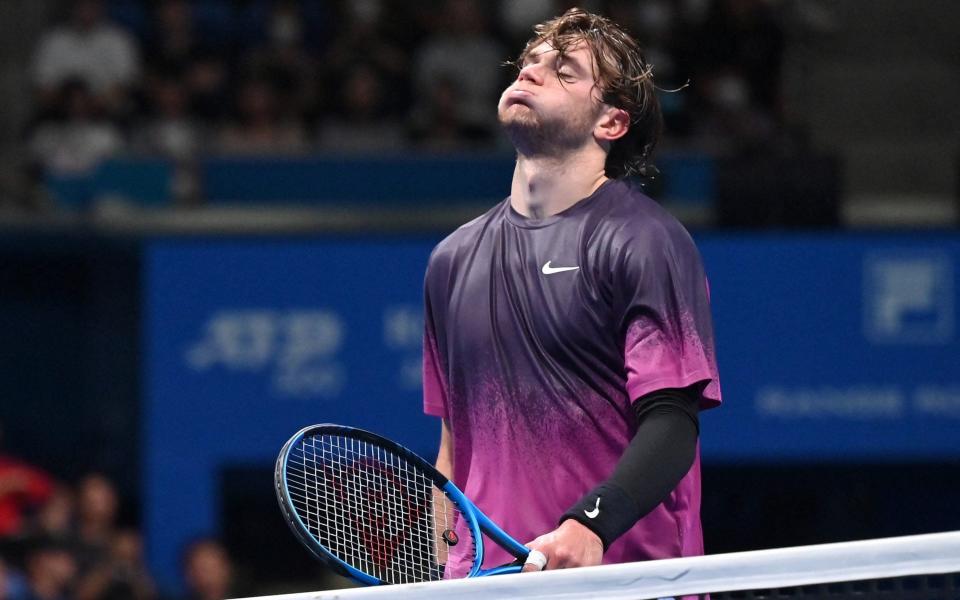Sports
Novak Djokovic’s players’ association readies legal fight to reshape tennis calendar

The players’ association founded by Novak Djokovic is weighing up a programme of legal challenges that could reshape the world game.
The Professional Tennis Players’ Association (PTPA) has hired “multiple global law firms” to carry out what its chief executive calls “a full, top-to-bottom physical of the entire structure of tennis”.
The PTPA’s central point is that the average tennis player remains overworked and underpaid by the standards of global sport. Although the ATP and WTA Tours have staved off the spectre of a LIV-style breakaway, mainly by granting official events to Saudi Arabia, it now seems as though revolution could come from within.
Already this season, we have seen proposals for a streamlined “Premium Tour” peter out, while cases of player burn-out proliferate, and matches increasingly extend into the small hours of the morning. Frustration is building within both the men’s and women’s locker rooms.
The news comes three days after former French Open finalist Stefanos Tsitsipas posted – and then deleted – a 747-word message on X (formerly Twitter) that said: “The need for change is more urgent now than ever … The ATP and WTA calendars don’t give us a break … With leaders like Novak Djokovic stepping in, the push for a more player-friendly schedule is gaining traction.”
Shortly before that, both Wimbledon champion Carlos Alcaraz and British No 1 Jack Draper had separately attacked the sport’s packed schedule, with Alcaraz saying “it’s going to kill us in some way”, and Draper calling the status quo “mental”.


‘Players have most to win and most to lose’
If the PTPA decides to bring a case, one sensitive area for both tours is their shared stance on exhibition events, such as the lucrative Six Kings Slam being played in Saudi Arabia in a fortnight’s time.
The ATP and WTA both use non-competition clauses which limit players’ ability to compete in these independent events away from the tour. But such restrictions could potentially be classed as restraint of trade if a legal challenge were to be launched.
PTPA chief executive Ahmad Nassar points out that, according to their data, tennis is the second-most watched sport globally after football, and yet it stands ninth on the list for player remuneration.
The players also complain that the four slams are paying roughly 14 to 16 per cent of their annual income out in prize money, whereas franchise sports in the USA – such as basketball – return around 50 per cent of their income to the players.
As Nassar told Telegraph Sport, tennis’s ongoing inertia is a far bigger problem for the players than it is for the various powerbrokers – most of whom are too busy with day-to-day firefighting to look at the sport as a whole.
“With regard to the reforms that tennis needs, the players have the most to win and the most to lose,” Nassar said. “All these other people, they don’t feel the urgency. Nobody on the planet has the urgency of a pro athlete. Every time you step on the court, your career could end – and even if it doesn’t, it’s still very short.”
The PTPA has mostly stayed out of the headlines for the past five years, concentrating on building its infrastructure, offering player services and benefits, and raising revenue via trading cards and computer games. But it is looking to step up on a number of fronts.
Nassar says that the PTPA’s legal review will not only focus on the ATP and WTA tours but also on the International Tennis Integrity Agency – which has overseen Jannik Sinner’s controversial doping case – the International Tennis Federation and the slams.


“The system is so biased against the players, as well as sub-optimal for fans and media partners and other commercial partners,” Nassar explained. “Only yesterday you had Naomi Osaka and Coco Gauff playing in Beijing in what should be a celebrated match, but it’s late in the year and everyone’s already burned out.
“We’re ratcheting up the pressure with our review, engaging multiple outside counsels to really dig in and be overt and aggressive on the many flaws of the current system.”
This year, the players have found themselves busier than ever, thanks to the inclusion of the Olympic tennis event on the schedule and the fact that matches are running longer and longer. Meanwhile the ATP have extended Masters 1000 tournaments to two weeks and the WTA have bumped up the number of mandatory events from four to 10.
Burn-out is an increasingly common phenomenon, as described last week by French No 1 Caroline Garcia in an emotional social-media post.
“Lately, I’ve felt overwhelmed on tour – the pressure to perform, the eyes watching your every move,” wrote Garcia, who has shut down her season early. “I’ve been struggling with anxiety, closing myself off, feeling trapped on court … I’m choosing to step away for now.”
The man behind the movement
The PTPA may have been founded in 2019 by Djokovic, working in tandem with Canadian pro Vasek Pospisil, but the appointment of Nassar as chief executive in 2022 represented a step up in ambition.
Unusually for the incestuous world of tennis, the 44-year-old Nassar has worked at a high level in other sports, including the NFL. His mentor was David Stern – formerly the commissioner of the US’s biggest basketball league – and he brings Stern’s can-do attitude to his present post.
While the PTPA has yet to be formally recognised by the tours or the slams, it is increasingly being included in the conversations around the future of the game. And Nassar believes that change is possible, despite the chaotic and internecine struggles that usually pass for tennis politics.
“David Stern loved to talk about how the NBA Finals weren’t even on live TV in the 1970s,” Nassar said. “These things change. I’m not saying that we’re going to become the world’s biggest sport tomorrow. I’m asking for a 10-year plan, because tennis needs a revamp and nobody seems to have an answer for where we are going next.”





